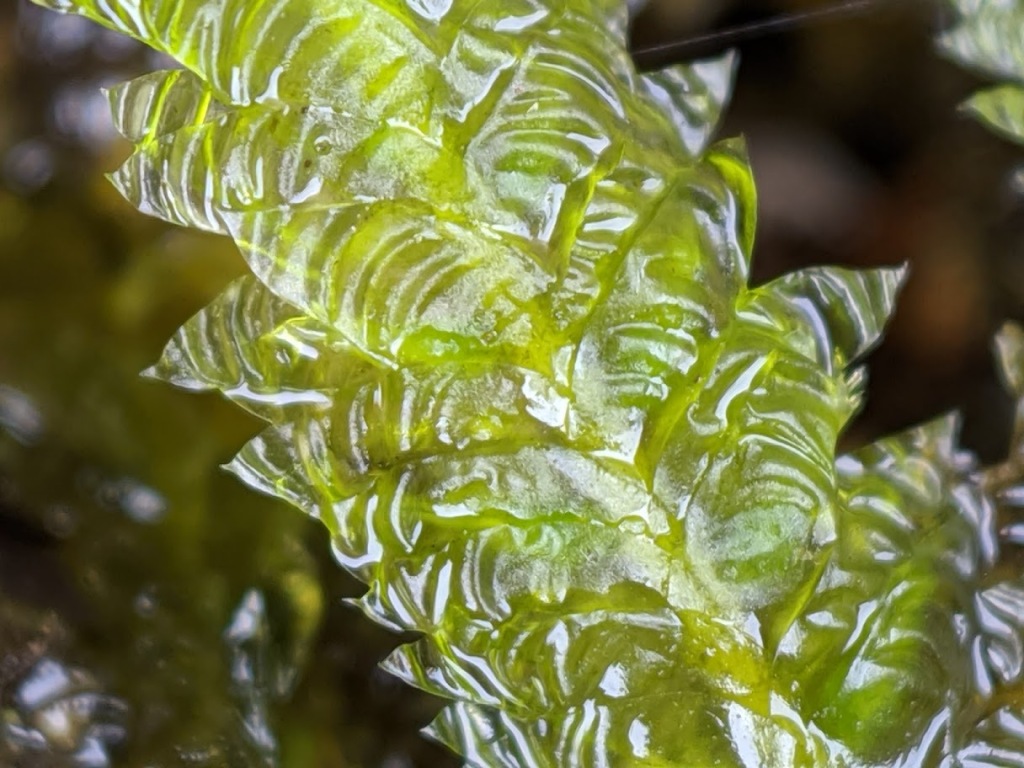Alleniella
DescriptionAutoicous or dioicous (not in Victoria). Asexual reproduction by flagelliform brood branchlets (not in Victoria). Mats or wefts on logs, rocks or tree trunks. Stems differentiated into creeping primary stem and simple or irregularly to regularly pinnately branched secondary stems; branches in one plane; paraphyllia present or absent (not in Victoria); pseudoparaphyllia foliose, lanceolate to filamentous (not in Victoria); central strand absent. Leaves ovate to oblong-lanceolate (not in Victoria) or lanceolate, asymmetric, complanate and erect-spreading when moist or dry, usually distinctly undulate and glossy; apex acute, rounded (not in Victoria) or obtuse and apiculate (not in Victoria); costa absent or short and double to ¼ of leaf length; margin serrate or serrulate in apical half or entire throughout (not in Victoria), plane or incurved at base, without a border; laminal cells linear, rhombic at apex, rectangular at base, smooth; alar cells quadrate, not forming a well-delimited group. Capsule immersed or exserted (not in Victoria), straight, ovoid to cylindric, without an annulus. Calyptra cucullate, smooth, glabrous or with sparse hairs near base (not in Victoria). Operculum obliquely rostrate. Peristome double; endostome segments rudimentary (not in Victoria) to around 1/3 of exostome height or as tall as exostome teeth (not in Victoria), with a low or high (not in Victoria) basal membrane; cilia absent.
PlaceTen species shared between the Americas, Europe, west Asia, China, tropical and southern Africa, Madagascar, the Mascarene Islands, New Zealand and south-eastern Australia; one species in Victoria.
NoteAlleniella was previously included in Neckera based on both sharing similar distinctive leaves that are deeply undulate, glossy, complanate, asymmetric and with a weak costa (Olsson et al. 2011). According to phylogenies based on chloroplast and nuclear DNA sequences this leaf form represents an ancestral state for one major lineage of Neckeraceae (Olsson et al. 2011). Some genera, such as Leptodon and Forsstroemia, have lost this morphology, but are more closely related to Alleniella than Alleniella is to Neckera.
 Spinning
SpinningOlsson, S.; Enroth, J.; Buchbender, V.; Hedenäs, L.; Huttunen, S.; Quandt, D. (2011). Neckera and Thamnobryum (Neckeraceae, Bryopsida): Paraphyletic assemblages. Taxon 60: 36–50.
